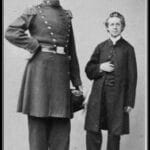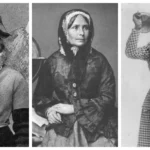Emira Eagle’s Journey: Love, Loss, and Legacy
Emira Eagle, a schoolteacher from Georgia, likely never anticipated her life intertwining with the vibrant, often turbulent world of rock ‘n’ roll. Her marriage to Frankie Lymon, the teen idol whose hit song “Why Do Fools Fall in Love” propelled him to stardom, thrust her into a legal maelstrom that would profoundly test her resilience. This is her story: a narrative of love, loss, and the unwavering pursuit of recognition amidst swirling controversy.
Emira and Frankie’s relationship remains partially shrouded in mystery. The specifics of their meeting and the full extent of their time together are not entirely clear. However, available accounts strongly suggest their love was genuine. Frankie’s untimely death in 1968 left Emira grappling with grief and the unexpected burden of a complex legal battle.
Frankie Lymon’s passing ignited a legal firestorm over the rights to “Why Do Fools Fall in Love.” The dispute transcended mere financial matters; it concerned his legacy, the control of his musical contributions, and who would benefit from his creative genius. Emira, with legal representation, stepped forward to assert her position as Frankie’s rightful widow and heir to his copyrights. A schoolteacher navigating the unfamiliar and often daunting legal landscape, her courage is noteworthy.
The situation was far from simple. Two other women also claimed to be Frankie’s wives, intensifying the legal complexities. The case evolved into a tangled web of competing claims, conflicting narratives, and intense public scrutiny. Emira likely faced immense pressure, fighting not only for financial security but also for her identity as Frankie’s wife.
Throughout this ordeal, Emira exhibited remarkable fortitude. She refused to be silenced or marginalized, steadfastly protecting Frankie’s memory and securing her place in his story. This fight for recognition was likely emotionally and financially draining, yet Emira persevered, demonstrating a quiet strength that belied her unassuming background.
While the legal battle consumed significant time and energy, Emira’s life extended beyond the courtroom. As a dedicated teacher in Augusta, Georgia, she shaped young minds and contributed to her community. Balancing the demands of her legal fight with her commitment to her students likely required immense strength. She probably found solace and purpose in her work amidst the surrounding chaos.
If you are interested in design, you should check out the work by Emilie Gossiaux. Her work is beautiful and inspiring.
Emira Eagle’s story is more than a footnote in rock ‘n’ roll history; it’s a testament to human resilience, a story of love’s power, the intricacies of relationships, and the courage to fight for one’s beliefs. Her fight for recognition, intertwined with her love story with Frankie Lymon, deserves to be known and understood. It is a narrative about a woman who refused to be forgotten, who fought for her place in the heart of a rock ‘n’ roll legend’s legacy. While some details remain unclear, we can admire the quiet dignity and unwavering resolve of Emira Eagle, a woman who challenged the narrative and claimed her own part of the story.
Finding Love Again: Emira Eagle Bryant
After the heartbreaking loss of Frankie Lymon, Emira faced the daunting task of rebuilding her life. Navigating life after such a public and tragic loss must have presented significant challenges. Yet, Emira, demonstrating remarkable resilience, not only survived but thrived. Years later, she found love again, marrying Leroy Bryant in 2001 and changing her name to Emira Bryant. This new chapter likely brought stability and joy after the tumultuous period following Frankie’s death, suggesting her readiness to embrace companionship and build a life centered on love and mutual support. While specifics about her relationship with Leroy remain largely unknown, this marriage signifies an important part of her journey toward healing and finding happiness again. It reminds us that even after profound loss, love and a new life filled with meaning are possible.
Emira’s identity transcended her connection to a famous musician. Her life was defined not by her past but by her choices and contributions. Her dedication to education, choosing a career as a teacher, likely provided purpose and fulfillment, allowing her to shape future generations and positively impact her students’ lives. Establishing roots in Augusta, Georgia, she became an integral part of the community.
More than just a teacher, Emira actively engaged with her local community. Her involvement with organizations like the Willie Mae Howard Missionary Ministry suggests a deep commitment to service and a desire to contribute to something larger than herself. This paints a picture of a woman who valued faith, community, and making a positive impact. It’s a testament to her character and desire to give back.
While Emira’s connection to Frankie Lymon is a significant part of her story, it’s crucial to remember the multifaceted nature of her life. There were undoubtedly many other dimensions to her personality and experiences beyond her marriage to a famous singer. Although we may not have all the details, we can appreciate the full life she built, dedicated to service, community, and love. Emira’s story, intertwined with a well-known figure, ultimately becomes a testament to her individual strength, resilience, and the quiet power of a life well-lived. Through teaching, community involvement, and finding love again, she created a legacy extending far beyond the spotlight of her first marriage. She reminds us that even in the face of adversity, healing, growth, and happiness are possible. Her wedding to Frankie Lymon took place in a small ceremony at Beulah Grove Baptist Church in Augusta, Georgia, a detail she herself confirmed, contrasting with the more elaborate depiction in the film. As biographer Mallory Millender noted, Emira’s marriage to Frankie was “an ideal marriage that was interrupted by his death,” painting a picture of a loving, albeit short-lived, relationship.
The Complexities of Marriage: Who Was Really Married to Frankie Lymon?
Frankie Lymon’s brief but eventful life and rise to fame with “Why Do Fools Fall in Love” are well-documented. However, his personal life, particularly his romantic relationships, was even more intricate. The central question persists: who was actually his wife? The answer is a tangled web of claims and counter-claims.
Three women—Elizabeth Waters, Zola Taylor of The Platters, and Emira Eagle—claimed to be Mrs. Frankie Lymon. This complicated situation escalated into a full-blown legal battle after Frankie’s death in 1968, a fight over his legacy and estate. Each woman insisted she was the rightful heir, leading to a captivating courtroom drama.
After extensive legal proceedings, the courts recognized Emira Eagle as Frankie Lymon’s legal widow. Her 1967 marriage to Frankie, though tragically cut short by his passing in 1968, was deemed legally sound. She fought tirelessly to prove her claim, and ultimately, the court sided with her. The emotional toll of grieving while simultaneously fighting for recognition as his wife must have been immense.
Zola Taylor, the lead singer of The Platters, also claimed to have married Frankie. However, her claim lacked legal documentation, rendering it unsuccessful in court. While she may have believed she was married to him, the absence of official paperwork proved critical.
Elizabeth Waters also insisted on her marriage to Frankie Lymon, even claiming to have had a child with him. However, her claim was invalidated due to her existing marriage at the time of her purported marriage to Frankie. This sad situation underscores the complicated relationships and difficult circumstances surrounding Frankie’s life.
| Woman | Claim to Marriage | Legal Outcome |
|---|---|---|
| Emira Eagle | Married in 1967 | Recognized as legal widow |
| Zola Taylor | Claimed marriage | Dismissed due to lack of legal documentation |
| Elizabeth Waters | Claimed marriage & child | Invalidated due to existing marriage |
It’s important to acknowledge that these events occurred decades ago, and information may be incomplete or conflicting. While Emira Eagle’s claim was legally recognized, the stories of Zola Taylor and Elizabeth Waters remain part of the narrative. Their claims, though unsuccessful, highlight the complexities of Frankie Lymon’s personal life. They remind us that behind the music and fame, real people grappled with complex emotions and relationships. Mallory Millender, in her biography of Emira, provides further context, describing their time together as “a year-long honeymoon,” suggesting a deep affection despite the short duration of their marriage.
While legal records point to Emira Eagle as Frankie Lymon’s official wife, the stories of these three women offer a glimpse into the often-messy realities of life, even for those in the spotlight. They also remind us that even decades later, unanswered questions and varying perspectives on the past can persist.
Emira Eagle on Screen: Lela Rochon’s Portrayal
The 1998 film “Why Do Fools Fall in Love” offers a cinematic interpretation of Frankie Lymon’s life and the legal battles that followed his death. Lela Rochon portrayed Emira Eagle, bringing a quiet, graceful Southern charm to the role. The movie offers one particular perspective on Emira, suggesting a gentle demeanor, especially in contrast to Frankie’s other wives. It’s important to remember that movies often take creative liberties, and the film’s portrayal may not fully capture the complexities of her personality.
Rochon’s performance helped shape public perception of Emira. She brought vulnerability and dignity to the role, making Emira a sympathetic figure amidst a tumultuous relationship. Emira’s decision to marry Frankie despite his other marriages suggests a strong will and a profound belief in their love. Their brief time together, tragically cut short by Frankie’s death in 1968, is portrayed with intensity in the film, heightened by Rochon’s performance.
The movie also touches upon the legal battles Emira faced over Frankie’s musical royalties. Navigating such complexities while grieving her husband’s loss must have been an arduous journey. The film highlights her determination to secure her place in Frankie’s legacy, a fight perhaps motivated not only by financial considerations but also by a desire to honor his memory.
It’s crucial to remember that Emira’s life was not solely defined by her relationship with Frankie Lymon. Her career as a teacher, her later marriage to Leroy Bryant, and her community involvement represent significant aspects of her life that extend beyond the film’s narrative. Further exploration of these areas could provide a more comprehensive understanding of who she was as an individual.
While “Why Do Fools Fall in Love” shaped public perception of Emira Eagle, and Lela Rochon’s performance significantly contributed to this image, it’s essential to recognize the film’s limitations. The movie offers valuable insight into one chapter of her life, but there was undoubtedly more to her story than just her relationship with Frankie Lymon. Further research and biographical work could shed more light on these unexplored aspects of her life.
- Centerview, MO: A Quiet Oasis Near Warrensburg with a Rich History - November 22, 2024
- Tieton, Washington: An Artist’s Oasis in the Yakima Valley - November 22, 2024
- Chetek, Wisconsin: Exploring the Chain of Lakes and Small-Town Charm - November 22, 2024















1 thought on “Emira Eagle: The Untold Story of Frankie Lymon’s Widow and Her Fight for Recognition”
Comments are closed.